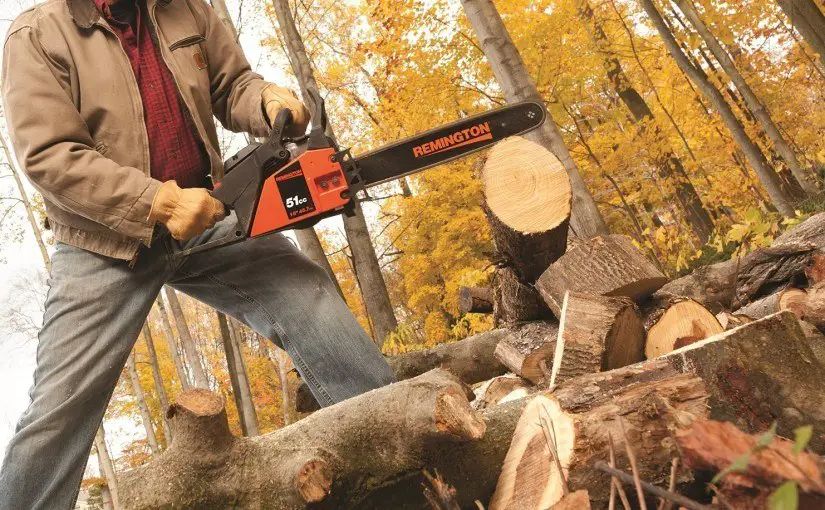Saws
So You Want To Buy A Chainsaw?
If you’ve landed here then either you’ve got something to do that requires a chainsaw so you’re looking for information on which one to buy, or you want a chainsaw and you’re looking for a task to justify the expense (to your other half).
We’ll tackle the second problem first; here’s a few reasons you might want to own a chain saw.
- Pruning branches
- Clearing storm debris
- Cutting firewood
- Felling trees
- Preparing your own lumber
- Art – ice sculptures and the like
Choosing a chainsaw
Hopefully you’ve got enough of a reason now, whether you arrived with one or found it here. So what should you be looking for in your new chainsaw?
Power
First up, power; you’ve got three options when it comes to how your chainsaw is powered:
Gasoline chainsaw
These are typically more powerful and can be used in the rain. However, they require more maintenance, are heavier, noisier and give out exhaust fumes.
Electric chainsaw
Typically good for smaller jobs which require less power, electric chainsaws can be cordless or corded.
A corded chainsaw will be lighter and won’t run out of power, but you will be limited by the length of your power cord. You’ll also need to make sure your cord isn’t in your cutting path!
A cordless chainsaw will have its own battery. This means you aren’t restricted to where you can go and you’re not going to cut through your cord. But it will be heavier and you’ll have limited working time between charges. You might want to have multiple pre-charged batteries ready before you start a big job.
Aside from the typical chainsaw design, featuring front and rear handles on an engine housing with the cutting bar extending outwards, there are two further designs which may interest you depending on your reason for owning one.
Pole saw
A pole saw – literally a saw on a poleIf you’re pretty much only going to be pruning branches then you might be interested in a pole saw. This is a small saw mounted on an extension pole. With you pole you’ll have an increased reach to get up high in your trees.
Jaw saw
A “jaw saw”The last design has a set of jaws around the cutting bar which will offer increased protection from the chain. The jaws will often have teeth which will grip onto the object you’re cutting to help hold it still. This style is sometimes called a jaw saw (but not often).
Features
So you’ve chosen a style and how it’s going to be powered. Time for the optional extras:
Spring Assist Start
Some chainsaws, especially larger petrol powered ones, can be very difficult to get started. This can make it much easier.
Chain Brake
This is a lever incorporated into the front hand guard. If the chainsaw catches and kicks back then your hand will touch the lever and activate the brake. Hopefully saving you from serious injury. Highly recommended!
Chainsaw Guide Bar
This is the long bar that the chain runs around. These range in length; the longer the guide bar, the thicker diameter of log that the chainsaw can cut, but the more difficult it is to use. And remember, the longer the bar is, the bigger and heavier the chainsaw will be.
Vibration dampers
Chainsaws now have rubber or springs attached to the handles to help dampen the vibration from the motor. This makes it more comfortable to use and a lot safer; its hard to keep control when your hands have gone numb from vibration.
Safety
Don’t forget safety; a chainsaw will happily cut through you as easily as it does wood (probably easier). So as well as the safety features on the chainsaw itself you’ll also want:
- Ear defenders
- Chainsaw chaps
- Shoes with steel toe caps
- Eye protection
- Hard hat
- Gloves
- A good saw horse with serrated teeth to hold logs (depending on what you’re doing)
Summary
Before you rush out and by one, have a think about what you’re going to do with your chainsaw. The tasks that you can see yourself doing will determine which type is best for you. For smaller jobs you’re probably looking at a cordless electric chainsaw (maybe even a pole saw if you’re just pruning tall trees). Medium jobs will need a corded electric saw and for the biggest ones you’ll want a gasoline chainsaw. See if you can hold the saw before buying too (I doubt any shop will let you fire it up for a proper test run), but make sure the weight and size aren’t too much for you to handle. It’s dangerous remember!
Have fun with your new chainsaw. Don’t chop up anything you’ll regret later. And make sure you stay safe!!




